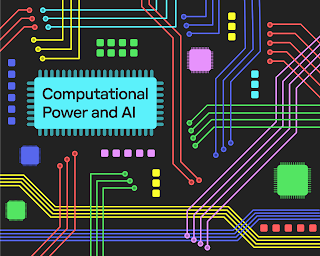Computing power technology refers to the capacity of a computer or computer system to execute complex computations and data processing tasks. The number of calculations or operations a computer or system can perform per second is one common way to express processing speed.
Several components comprise a computer or system responsible for its computing power. These components include the central processing unit (CPU), storage devices, Random-access memory (RAM), and graphics processing unit (GPU) Dedicated Servers USA.
Other factors influencing computing power include the software applications used, the operating system on which the computer or system runs, and the network’s infrastructure that connects multiple computers or systems.
The growth of computing power technology has been a crucial factor in the evolution of contemporary computing. As computing power has risen, computers can now perform more complex tasks and manage larger quantities of data.
This has led to significant progress in numerous fields, including scientific research, data analysis, and artificial intelligence.
Today, computing power technology advances at an unprecedented rate, with new hardware and software development breakthroughs driving further improvements in processing speed, efficiency, and precision. Consequently, computing power will likely play a vital part in shaping the coming years of technology and innovation.
Importance of Computing Power
There are many factors that affect computing power:
- One of the most crucial components is the number of processors a computer has. A computer's processing power increases with the number of its processors. Another crucial factor is the processor's speed. The computer has more processing power the faster the processors are.
- Another crucial element is the computer's memory capacity. A computer's processing capability increases with the amount of memory it possesses. Another crucial factor is the sort of RAM a computer has. Memory comes in a variety of speeds. They can now store and retrieve data more quickly as a result.
- The computing power of a computer can also be impacted by the operating system it runs. Different operating systems have different computing power requirements. They are therefore compatible with machines that have less processing capability.
Type of computing power
There are multiple types of computing power technologies, such as:
Central Processing Unit
CPUs are designed to perform various tasks, including arithmetic, logic, and input/output (I/O) control. In addition, they are responsible for retrieving program instructions from memory and decoding them into a format that the computer’s other components can understand.
The Central Processing Unit (CPU) is commonly referred to as the computer’s brain.
It is one of many processing units, but arguably the most important. The central processing unit performs calculations and actions and runs programs.
These functions were distributed across multiple processors in older computers. However, manufacturing and design advancements have allowed the CPU to fit onto a single chip. Therefore, you may also hear CPUs referred to as microprocessors.
This has allowed for the development of thinner, lighter laptops and the creation of all-in-one computing devices. These robust processors are also crucial to the functionality of your smartphone.
Graphics Processing Unit
A specialized processor designed to perform complex graphics and visual computing operations. GPUs are frequently employed in gaming, scientific research, and machine-learning applications.
GPUs are processors which efficiently render photos and videos.
While CPUs and GPUs are significant for various reasons, the latter’s power has dramatically increased in recent years.
This is largely a result of games and other graphically demanding applications becoming increasingly popular.
As a result, GPUs have become more potent, with some models now exceeding the performance of high-end CPUs.
Despite their distinct functions, CPUs and GPUs are necessary for contemporary computing. With a powerful processor, electronic devices could perform the tasks on which we rely daily.
Field Programmable Gate Arrays
Field-programmable gate arrays (FPGAs) are programmable logic devices that can be reprogrammed to carry out various computing tasks, making them useful in fields like digital signal processing and cryptography.
Moreover, an FPGA is an integrated circuit (IC) that facilitates custom logic creation for rapid prototyping and final system design.
FPGAs are distinct from other custom or semi-custom ICs due to their inherent flexibility, which enables them to be programmed and reprogrammed via a software download to adapt to the changing requirements of the larger system for which they are designed.
FPGAs are ideal for edge computing, AI, system security, 5G, factory automation, and robotics, which are growing rapidly.
Quantum Computing
New computing technology known as quantum computing runs calculations in accordance with the laws of quantum mechanics. When applied to specific problems, quantum computers may be able to find answers much more quickly than classical ones.
Each computing power technology has pros and cons and is best for distinct types of computing tasks. The application’s specific requirements and available resources determine the technology utilized.
In addition, Google will spend billions of dollars by 2029 building its quantum computer. Google AI’s California campus helps the company achieve this goal.
Once developed, Google could launch a cloud-based quantum computing service.














